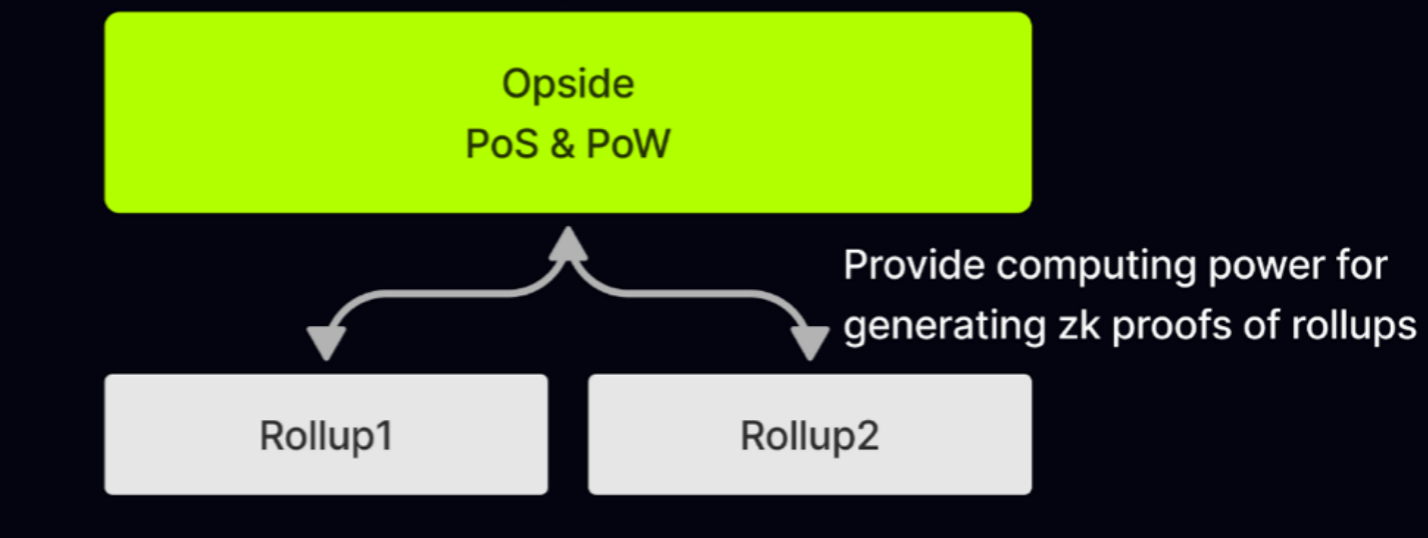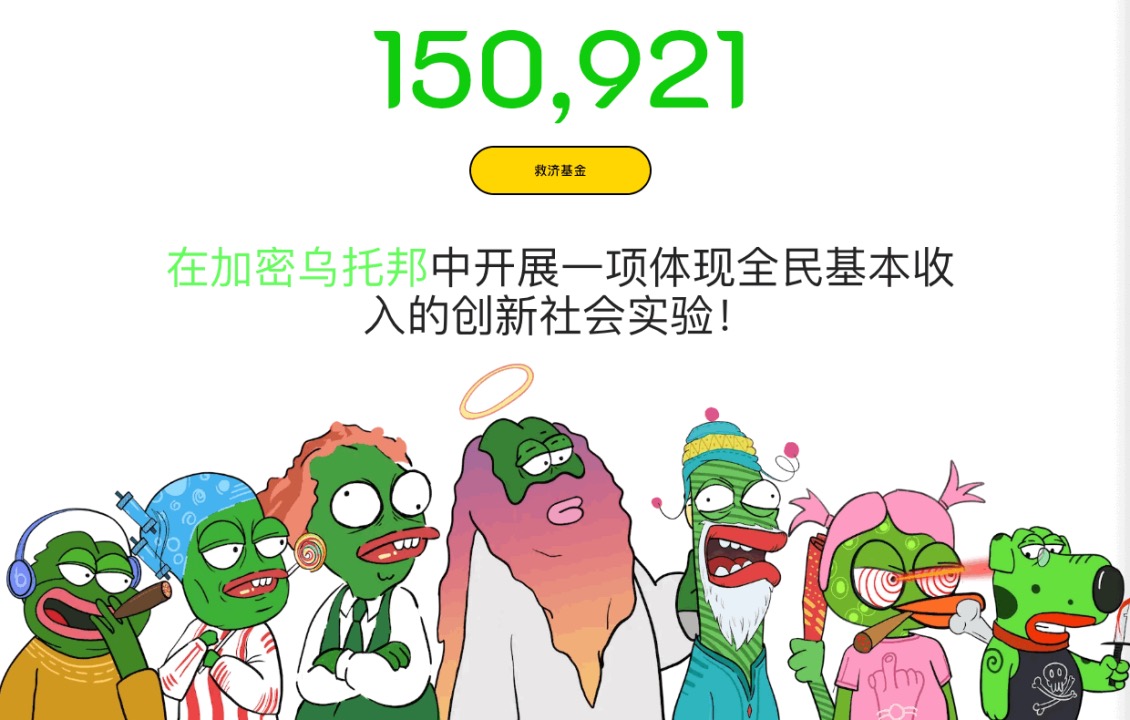NGC Ventures: Why we invested in Opside
NGC Ventures invested in Opside.Author: HenryZhang
Opside is a decentralized ZK-RaaS (ZK-Rollup as a Service) platform and a leading ZKP (zero-knowledge proof) mining network in the industry. Opside adopts a PoS & PoW hybrid consensus and provides Web3 developers with a one-click function to generate a zkEVM application chain. At the same time, the huge computational demand generated by these numerous ZK-Rollups also provides a meaningful mining scenario for global miners, filling the massive idle computing power left by ETH abandoning PoW.
1. The natural fit between ZK and RaaS (Rollup as a Service) can bring better developer and user experience
As the most popular solution for scalability, Layer2 enhances Ethereum’s scalability. Developers are also beginning to pursue blockchains that are lower in cost, higher in performance, and can meet some customized needs. Enhancing the value capture of governance tokens of the application itself through the application chain is an important development direction for this problem. RaaS can become a solution to this demand.
Currently, most mainstream RaaS services are based on optimistic rollup, which is determined by the low threshold and high compatibility of such solutions. However, we have always been bullish on the development of ZK-Rollup because of the higher security, interoperability and finalitytime brought by ZK-Rollup technology. Opside’s ZK-RaaS achieves friendliness to the underlying technology of ZK-Rollup and has significant advantages in security and withdrawal speed.
- Investment tips for the next bull market: In-depth analysis of the development status and trends of 15 cryptocurrency tracks
- Game Dosi: First Impressions of LINE’s Web3 Game, the Japanese Communication Giant
- How to achieve zero-cost and permissionless benefits through off-chain NFT?

Opside provides a modular RaaS solution:
- OpsideChain: It is both a consensus layer and a data availability layer. All generated transactions and data will be verified, packaged, and stored on Opsidechain. The transaction speed is fast and the handling fee is low.
- Rolluplayer: The execution layer based on ZK-Rollups (especially zkEVM), each application can have its own zkEVM chain. These ZK-Rollups are managed by a unified system contract, and they have the same interface specifications and data results, so native cross rollup communication can be achieved.
2. Exquisite token economics incentives to maintain decentralization and PoW computing power support
Opside adopts a hybrid consensus of PoS and PoW. The participating roles are Validator in PoS and Miner in PoW. Validators also act as the Sequencer of Rollup to obtain corresponding benefits. Specifically:
- OpsideChain
- PoS: Opside will adopt the PoS algorithm of Ethereum 2.0 and make necessary improvements to it. Therefore, Opside’s consensus layer will have more than 100,000 validators. Anyone can hold IDE tokens and become a validator. Validators can receive block rewards and gas fees.
- RollupLayer
- PoS (Sequencer): Validators not only propose Opside blocks but also propose Rollup blocks (i.e., data batches). Therefore, validators are also the sequencers of Rollup. Sequencers can earn gas fees from Rollup transactions.
- PoW (Prover): Anyone can become the prover (i.e., Miner) of Rollup as long as it has sufficient computing power to perform ZKP calculations. According to Opside’s PoW algorithm, provers can freely generate ZKP for one or more ZK-Rollups and obtain corresponding rewards.
According to the mixed consensus of PoS and PoW, block rewards are divided into two parts: PoS and PoW, corresponding to Validator and Miner, respectively. In the Pre-Alpha testnet stage, the block reward ratio of PoS and PoW is temporarily fixed at 1:2, that is, 11% of IDE tokens are allocated to validators, and 22% of rewards are allocated to miners. In the future, the ratio of these two will dynamically adjust with the ZKP computing power supply and demand of the entire network.
In summary, Opside chain adopts the PoS consensus of ETH 2.0 and will have more than 100k validators. At the same time, the permissionless PoW will attract more miners to jointly maintain security. Based on Opside’s innovative economic model, developers need to pay the rent of Rollup slots to bear the cost of ZK-Rollup.
3. ZK-RaaS service for one-click deployment of zkEVM chain, making scalability and low threshold possible
In order to allow developers to establish their own Rollup through Opside’s service more seamlessly, Opside has developed a smooth frontend service and achieved:
(1) Hardware full hosting. The two hardware resources required by ZK-Rollup, data availability (analogous to hard disk) and zkp computing power (analogous to CPU), are provided in a decentralized and permissionless manner by PoS and PoW, respectively. Developers do not need to bear any hardware costs.
(2) Sovereignty. Developers have sovereignty over ZK-Rollup and can customize the rollup economic model, even setting gas fees to 0.
(3) EVM compatibility. Developers can freely choose from multiple types of zkEVM SDKs, including PolygonzkEVM, scroll, zkSync, StarkNet, etc., with almost no migration costs for applications.
With these services, developers can easily generate their own ZK-Rollup (especially zkEVM), and thanks to the autonomous setting of gas fees, they can promote the further popularization of fully on-chain applications.
4. Continuous, dedicated ZK development team, stronger product delivery capabilities.
The team has several years of experience in the blockchain field and has long-term research on Zk technology. Therefore, the team has strong execution capabilities and skills for the technical development of ZKRollup.
We will continue to update Blocking; if you have any questions or suggestions, please contact us!
Was this article helpful?
93 out of 132 found this helpful
Related articles
- Stablecoins: Not a Replacement for Banks, but a New Disruptor
- Flashbots: Restraining all parties, committed to thoroughly decentralizing MEV
- MEME Coin: From Internet Meme to a Market Cap of Over One Billion, What’s Behind the Power?
- When AI meets blockchain: ushering in a new era of human-machine integration
- What are the recent movements of Crypto VCs? 7 tools to help you easily track
- a16z partner jonlai: the most successful application is the packaged game
- How Blockchain Is Impacting Online Poker






